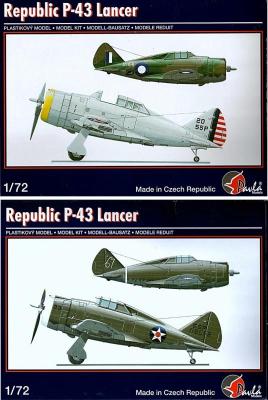This is the third item from Master Model that I have had the privilege of reviewing, and once again, I have had a very positive experience with some remarkable items. The subject of this review comes from the Sea Master line of parts, in particular their 1/700 scale offering of 28cm/54.5 (about 11 inches) SKC/34 gun barrels as carried by the German ships Scharnhorst and Gneisenau. I volunteered for this particular review as I already had a Tamiya Water Line Series Scharnhorst (kit 77518) lying in wait in my stash, ready to accept these new parts.
Welcome to the IPMS/USA Reviews site!
Introduction: The primary organization of the IPMS/USA Review website is by IPMS/USA National Contest Class. Within each Class there are sub-menus by kits, decals, books, etc. The Miscellaneous Class is for items that are not class specific or that cross two or more classes.
IPMS/USA Members: We encourage you to submit reviews, both here and to the Journal. To volunteer for membership in the IPMS/USA "Reviewers Corps" and submit your own reviews, please read the Guidelines For Submitting Product Reviews.
Manufacturers, publishers, and other industry members: IPMS/USA is pleased to offer your company the opportunity for product reviews. All product reviews are performed by IPMS/USA members, and are posted in the publicly-accessible section of our website. With very few exceptions, we perform full build reviews of new kit releases, aftermarket products, and supplies. If you would care to provide product samples for review, please contact John Noack, IPMS/USA 1st VP.
To learn more about IPMS/USA, please see our About Us page.
Basically, this is a catalog of the Tamiya Paint line in a soft bound, in a ninety-six page format. The book is in Japanese; however there are English captions under the paint chips. The book is divided into sections of colors for cars, metallic’s, clear coats, primary colors and AFV’s/aircraft/ships by nationality.
Also included are photo instructions of masking techniques for those modelers who don’t have an airbrush but rely on hand brushing and spray cans. They are broken down into aircraft, armor and ships. As an added plus there are pictures of their fine line of tools, tape, weathering kits.
This book would be very welcome to any modeler who uses Tamiya paint. It’s a handy reference to have on hand before going down to the local hobby shop or ordering mail order because you know what color you will want and its number.
Background
The P-43 Lancer was developed in 1938 by Seversky Aircraft Corp. as a successor to their P-35. The new model was larger overall and featured the Pratt and Whitney R-1830 Twin Wasp radial engine with an exhaust driven supercharger. While the airplane possessed good altitude performance, it was apparent that it would not be able to compete with the aircraft then in operation in Europe. Small numbers were produced for the Army Air Corps and some others for export to the Chinese Air Force and the RAAF. In service, the airplane suffered from leakage from the integral wing fuel tanks and combined with the lower fuselage supercharger this caused a number of fires. The airplane was replaced by the larger, more powerful P-47 Thunderbolt.
Whenever Italeri announced they were releasing a 1/48 model of the Israeli C1/C2 Kfir, I really got excited. I thought that my prayers had finally been answered for getting a good 1/48 Kfir kit. But then I started thinking. Italeri has been famous over the last few years of rereleasing the old ESCI and other kits with a beautiful box and a great decal sheet.
Editor: Features the Russian captured D-9, "White 16" II./JG 301, "Black 4" W. Nr. 400271 III./JG 2 and "White 15" W. Nr. 600651
Just when you thought you had seen every marking scheme for Fw 190D9’s, Jerry Crandall comes out with a new book on the Dora and decals for newly discovered aircraft.
This sheet contains markings for four different aircraft, one of which was a captured aircraft used by the Russians The other three bear non-standard colors and markings, which was not at all unusual during the late stages of the Spring of 1945, right at the end of the war.
These decals are in keeping with the usual high quality research of Eagle Editions and are perfectly in register, as printed by Cartograf of Italy.
By the way, if you want some good reading and an excellent reference to add to your reference collection, get FW 190 Dora Volume Two, published by Eagle Editions, Ltd. It will give you even more info on these four aircraft.















